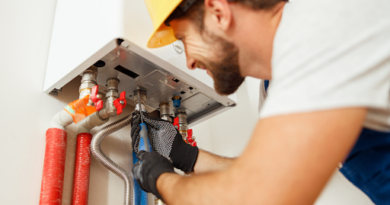Easy Steps to Installing Durable Stair Handrails
Installing sturdy and reliable stair handrails is essential for safety and convenience. Secure handrails not only enhance safety but also add a touch of elegance to your staircase.
Whether you’re upgrading an existing railing or starting from scratch, this guide will walk you through the process. In this article, we’ll break down the installation process into easy-to-follow steps, ensuring that your stair handrails stand the test of time.
In the following sections, we’ll explore practical tips and methods to ensure your handrails are not only durable but also aesthetically pleasing.
Let’s get started!
Tips for Installing Durable Stair Handrails
Assess Your Space
Before diving into the installation process, take a close look at your staircase. Consider the following factors:
- Stair Material: Is your staircase made of wood, concrete, or another material? The choice of handrail material should complement the existing structure.
- Wall Type: Examine the walls alongside the staircase. Are they solid concrete, drywall, or wood? The type of wall will determine the appropriate anchors and installation method.
- Available Space: Measure the length of your staircase and assess the available space for the handrail. Consider any obstacles or architectural features that may affect the installation.
Choose the Right Handrail Material
Selecting the right material for your handrail is crucial. Here’s why aluminum outdoor stair handrail system are a popular choice:
- Durability: Aluminum is highly durable and resistant to weather elements. It won’t rust or corrode, making it ideal for outdoor installations.
- Lightweight: Aluminum handrails are easy to handle during installation.
- Low Maintenance: Unlike wood, aluminum doesn’t require staining or sealing.
- Weather-Resistant: Aluminum can withstand rain, snow, and UV exposure.
Additionally, consider incorporating gas struts into your handrail design. These hydraulic devices allow for smooth opening and closing of the handrail, adding convenience and functionality.
Measure and Mark
Accurate measurements are essential for a successful installation. Follow these steps:
- Measure the Length: Measure the entire length of your staircase. Include any landings or turns.
- Mark the Desired Height: Decide on the height of the handrail. The standard height is typically 34 to 38 inches above the stair tread. Mark this height consistently across all sections.
- Secure the Brackets: Brackets provide essential support for the handrail. Here’s how to secure them:
- Choose Sturdy Brackets: Opt for brackets made of durable materials (such as stainless steel) that can withstand the weight and pressure of the handrail.
- Wall Anchors: Use appropriate wall anchors based on your wall type. For concrete walls, use concrete anchors; for drywall, use toggle bolts or wall anchors.
- Spacing: Space the brackets evenly along the length of the handrail. Typically, brackets should be placed every 4 to 6 feet.
Install the Handrail
With the brackets in place, it’s time to install the handrail:
- Position the Handrail: Place the handrail on the brackets. Ensure it’s level and comfortable to grip.
- Secure with Screws: Use screws to attach the handrail to the brackets. Make sure the screws are tight and secure.
- Finishing Touches: Sand any rough edges and apply a protective finish (such as paint or sealant) to enhance durability.




